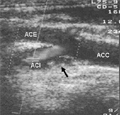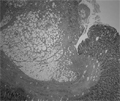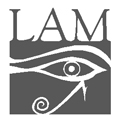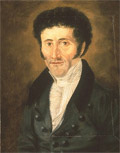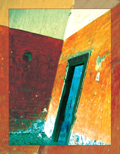The eLitMed.hu medical portal uses computer cookies for convenient operation. Detailed information can be found in the Cookie-policy.
Lege Artis Medicinae - 2005;15(10)
Content
[MYCOSES IN PATIENTS WITH HAEMATOLOGICAL MALIGNANCIES AND STEM CELL TRANSPLANTATION]
[Patients with haematological malignancies and stem cell transplantation are frequently prone to develop invasive mycoses. Candida and Aspergillus are the major fungal pathogens that cause infections. The recently introduced new antifungal agents, voriconazole and caspofungin and new diagnostic methods changed the treatment strategies of invasive mycoses. The authors give an overview of the diagnostics, prophylaxis and treatment of the clinically important fungal infections.]
[THE DIAGNOSIS OF CARDIOVASCULAR COMPLICATIONS IN DIABETES MELLITUS]
[In spite of establishing new therapeutical approaches in the medical care of type 1 and type 2 diabetic patients, the complications of diabetes still remain as one of the leaders in mortality statistics. The main problem is the high rate of cardiovascular mortality (80%) originating from hyperglycemia induced micro- and macroangiopathy. With the development of new diagnostic methods the cardiovascular impairment of diabetic patients is expected to be fully screened. The assessment of late complications and the incipient functional alterations in vasoregulation should also be part of the screening. The treatment strategy, primary and secondary preventive care are also based on the screening of advanced vascular complications and simultaneously existing endothelial functional alterations.]
[ANGIONEUROTIC EDEMA CAUSED BY ANGIOTENSIN-CONVERTING ENZYME INHIBITORS]
[Angiotensin-converting enzyme inhibitors are used in broad spectrum of cardiovascular pharmacotherapy as evidence based drugs. Cough, which is the most typical adverse effect of ACEinhibitors occurs in relatively high proportion of patients (20-63%) during therapy. Angioedema is a less frequent and often underdiagnosed but potentially life-threatening adverse effect of ACEI-treatment occurring typically on the face and extremities or rarely in a visceral form. Authors review the pathomechanisms of angioedema and the therapeutic options.]
[THE INFLUENCE OF IMMUNOGENOMIC FACTORS ON HIV-INFECTION]
[Authors discuss data published in the last 2-3 years indicating that besides the characteristics of the virus itself, the natural course of HIV disease is also regulated by genetic factors from the very onset till the end. Susceptibility for HIV infection of the carriers of a non-expressing mutant allele (CCR5Δ32) of one of the main coreceptors of HIV is markedly lower than that of the non-carriers. HLA-concordancy, that is few differences in the HLA alleles between the infected and noninfected partners, increases the chance of the HIVtransmittal. On the other hand, carriage of some HLA genotype e.g. that of the HLA A2/6802 supertype may significantly decrease the risk of the sexually transmitted HIV infection or that of the HIV infection from the mother to child. The rate of progression of the HIV disease which may vary in broad range from the median value of 10 years is also dependent on genetic factors. Progression is lower than the average in the carriers of the CCR5Δ32, HLA-B*27 and HLAB* 57 alleles while it is significantly more rapid in carriers of the HLA-B*35.1 allele. Recent data on the regulation by genetic factors of some sideeffects and the efficacy of combined antiretroviral treatment indicate that in the near future individual treatment may be used on the basis of the genetic background of the patients.]
[NEW PROSPECTS IN MEDICINE BY THE APPLICATION OF BIOTECHNOLOGICAL METHODS]
[The recent completion of the sequence of the human genome - thanks to the developments in biotechnology - has increased interest in genetics, but confusion remains about the role of genetic information in the medical practice. The role of genomics (a term coined only 15 years ago) in medicine is even more confusing. This review summarizes briefly the most important advances relating to the robust development in biotechnology, by which the practice of medicine has entered an era where the individual patient’s genome could help to determine the optimal approach to care, whether it is preventive, diagnostic, or therapeutic.]
[RIGHT HEMICOLECTOMY FOR SUBMUCOUS LIPOMA CAUSING PARTIAL BOWEL OBSTRUCTION]
[INTRODUCTION - Submucous lipomas are rare tumors of the colon and may be misdiagnosed as cancer because of their exophytic, polypoid growth and threatening bowel obstruction. CASE REPORT - A protruding, ulcerated and firm tumor preventing the investigation of the coecum was found by endoscopy in the ascending colon of a 50-year-old woman, who was subsequently operated on. The preoperative biopsy revealed only necrotic debris. Right hemicolectomy was performed because of threatening bowel obstruction and the presumed diagnosis of cancer. The tumor proved to be a 4 cm-large pedunculated submucosal lipoma. CONCLUSION - Despite recent diagnostic developments and the availability of better tools for the preoperative diagnosis of colonic lipomas, these tumors may still be misdiagnosed as carcinomas. Several circumstances contradict malignant dignity, such as: the relative circumscription of the mass, the trophic and only partial ulceration of the surface which is covered by normal mucosal layer elsewhere. To avoid unnecessary radicality in treatment, colon tumors with an uncertain preoperative diagnosis should undergo further diagnostic steps in order to clarify their nature. This could allow a more optimal therapeutic planning.]
[MOLECULAR IMAGING AND THERAPY IN HUNGARY]
[After a brief historical summary of molecular imaging and therapy (earlier called isotope diagnostics or nuclear medicine), which has more than 50 years history in Hungary, the author presents comparative international information regarding the status of this particular discipline in Hungary. He distinguishes between “single photon” or traditional techniques and “double photon” or PET methods. Besides listing well-known traditional methods, the author gives additional details and prognosis about Hungarian PET and PET-CT investigations playing increasingly important roles, especially in the field of oncology.]
1.
Clinical Neuroscience
[Headache registry in Szeged: Experiences regarding to migraine patients]2.
Clinical Neuroscience
[The new target population of stroke awareness campaign: Kindergarten students ]3.
Clinical Neuroscience
Is there any difference in mortality rates of atrial fibrillation detected before or after ischemic stroke?4.
Clinical Neuroscience
Factors influencing the level of stigma in Parkinson’s disease in western Turkey5.
Clinical Neuroscience
[The effects of demographic and clinical factors on the severity of poststroke aphasia]1.
2.
Clinical Oncology
[Pancreatic cancer: ESMO Clinical Practice Guideline for diagnosis, treatment and follow-up]3.
Clinical Oncology
[Pharmacovigilance landscape – Lessons from the past and opportunities for future]4.
5.






